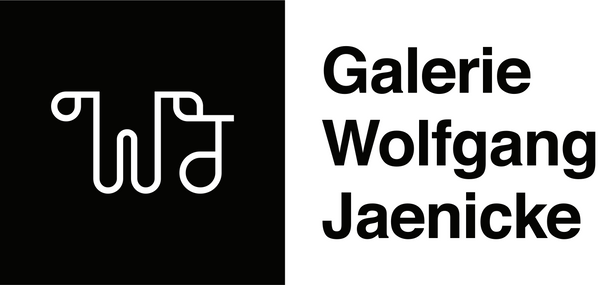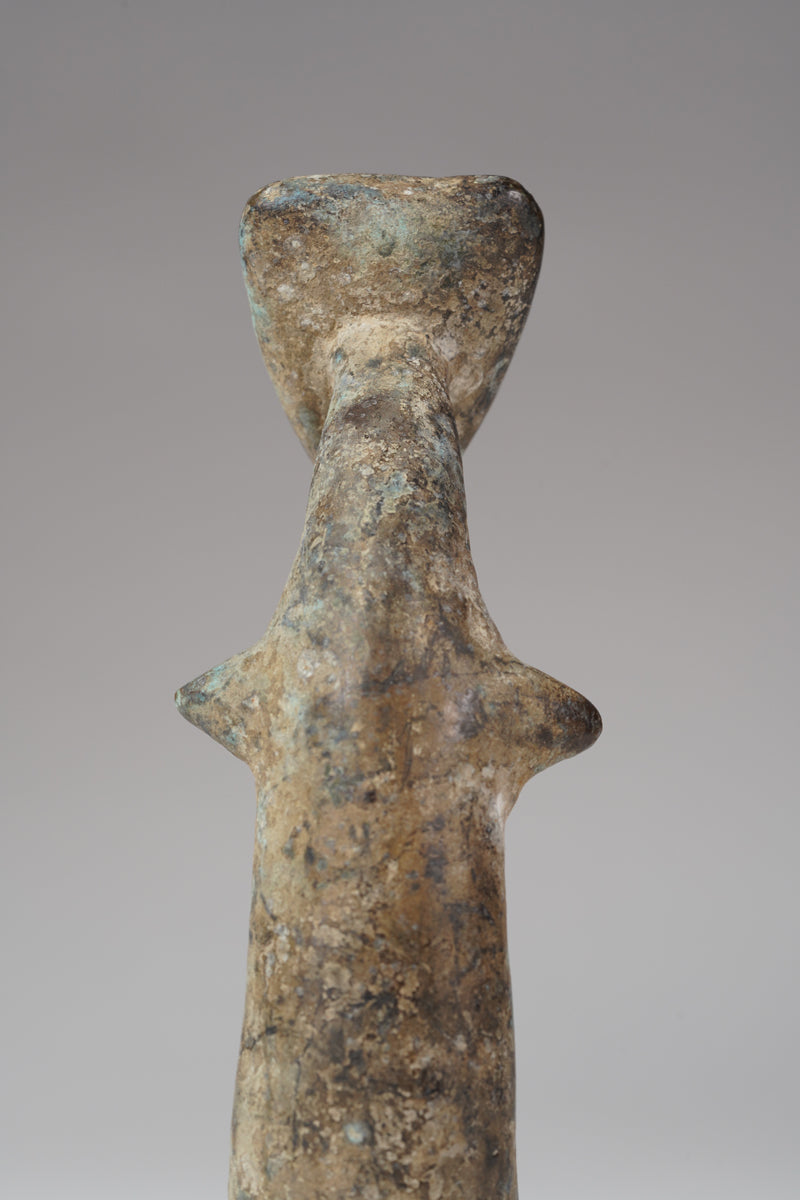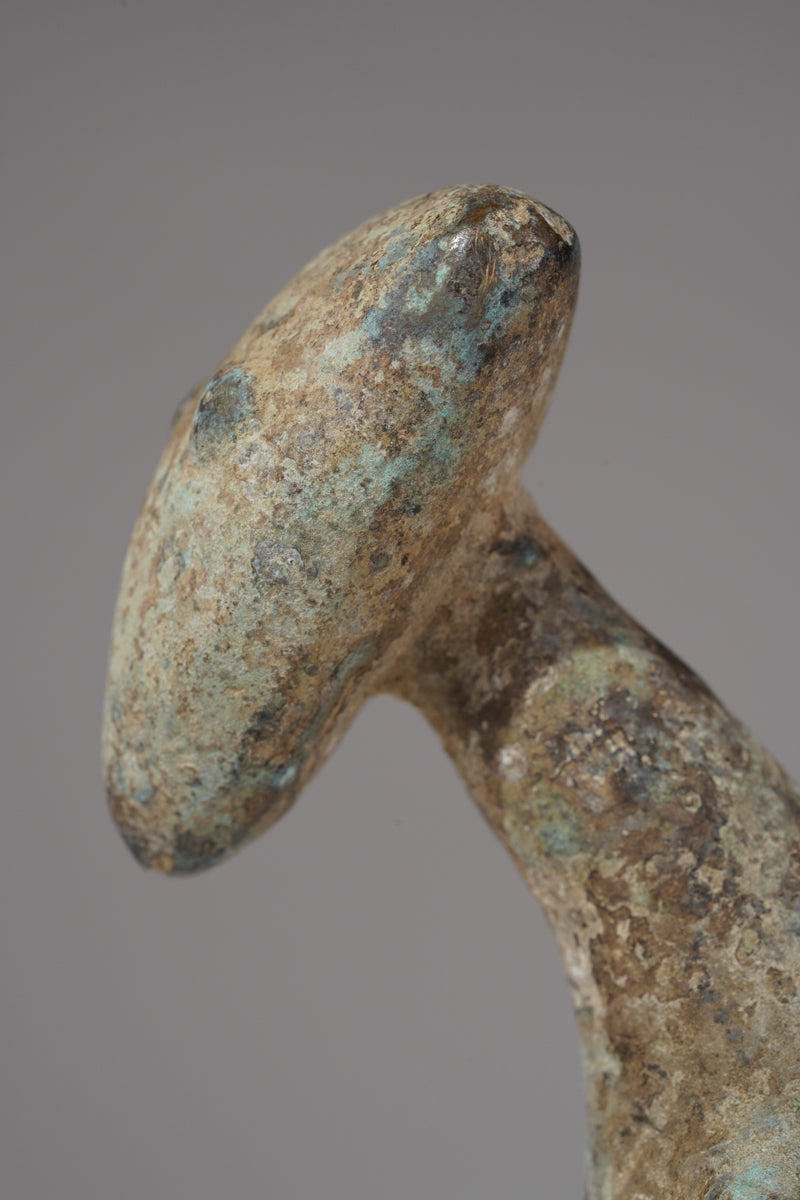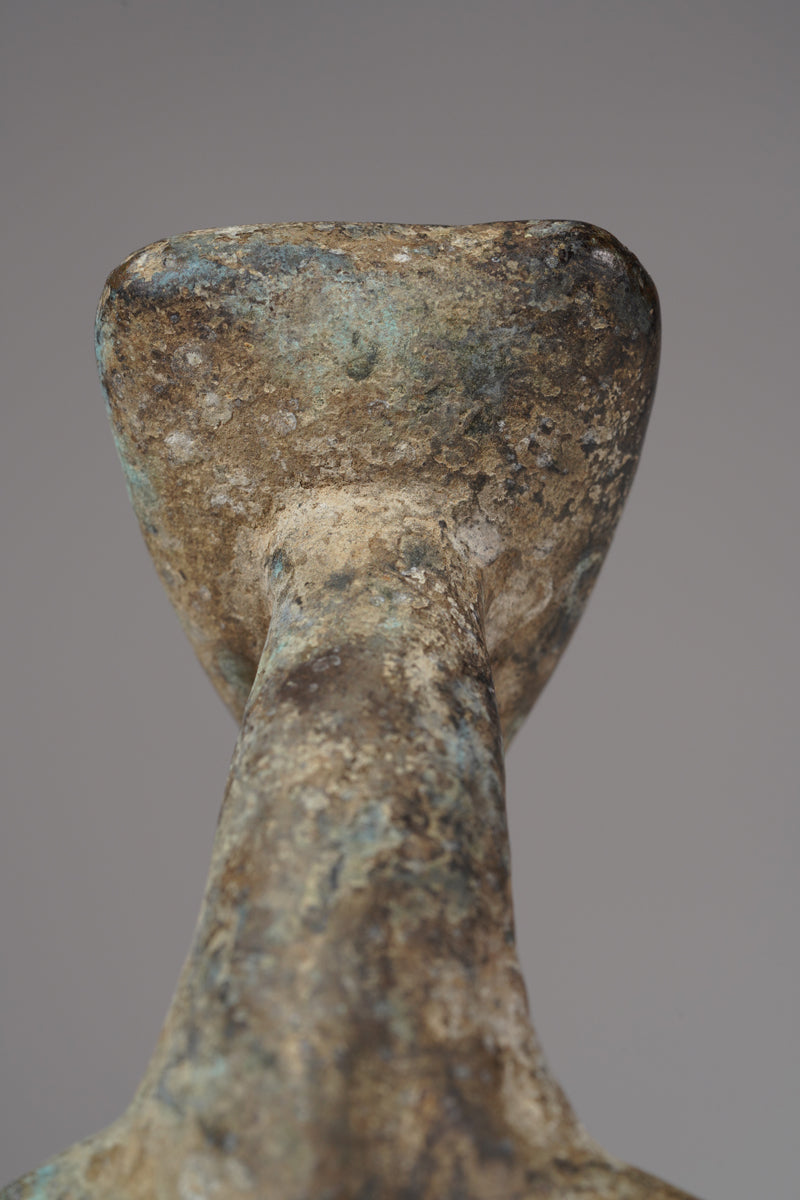Galerie Wolfgang Jaenicke
A Kulango Bronze figure
A Kulango Bronze figure
Couldn't load pickup availability
A Kulango Bronze figure, North West Ghana, sitting in a kneeling position, protruding navel, small short arms in the Kulango style, a thick neck carrying the triangular shaped head; oxidized and traces of ritual use.
The Kulango people of northeastern Côte d’Ivoire have historically practiced a refined tradition of bronze casting that remains relatively understudied compared to the more prominent metallurgical cultures of West Africa, such as the Benin Kingdom or Ife. Despite the scarcity of widespread academic and popular engagement, Kulango bronzes represent a distinct cultural and spiritual expression within African art history. They are typically produced through the lost-wax casting technique, a method widespread throughout West Africa. Their forms—ranging from miniature figurines and ritual objects to protective amulets—often serve in contexts such as divination, ancestral worship, and protective rites. Though small in size, these works are rich in symbolic meaning and are deeply integrated into the social and spiritual fabric of Kulango communities.
The stylistic features of Kulango bronzes differ significantly from the courtly and monumental bronzes of Benin or the naturalistic heads of Ife. Kulango pieces tend to exhibit a more abstract and regionalized aesthetic, suggesting not only a different artistic philosophy but also a variation in the social function of bronze within Kulango society (Roy 1987). These pieces were often produced for local use rather than for display in centralized palatial contexts, which may partly explain their historical marginalization in broader African art discourse.
The most substantial references to Kulango bronzes appear not in standalone monographs, but in thematic surveys and exhibition catalogs dealing with West African art or bronze casting traditions more broadly. In Susan Vogel’s influential catalog For Spirits and Kings: African Art from the Paul and Ruth Tishman Collection (1981), various metalworks from Côte d’Ivoire—including those of the Kulango—are highlighted for their ritual uses and unique stylistic elements. Similarly, Christopher D. Roy’s Art of the Upper Volta Rivers (1987) provides critical comparative material for understanding the metallurgical networks that span modern-day Burkina Faso, Ghana, and Côte d’Ivoire. Ethnographers and African art historians such as François Neyt, William Fagg, and Susan Mullin Vogel have also addressed peripheral casting traditions in their broader analyses. Although these mentions are often brief, they contribute to a growing scholarly appreciation of the regional complexity of bronze art in West Africa and reinforce the need for more focused research on communities like the Kulango.
In contrast to their modest presence in scholarly literature, Kulango bronzes are almost entirely absent from fictional narratives and popular literature. While the Benin bronzes have become potent literary and political symbols—featured in works that engage with themes of colonial looting, museum restitution, and identity—Kulango artifacts have not enjoyed a similar narrative life. This absence may be due to a number of factors: the relatively small scale of the Kulango tradition, the limited number of their works in major international collections, and the lack of a dramatic colonial-era history involving large-scale looting or museum acquisition. Nonetheless, the spiritual and symbolic richness of Kulango bronzes makes them a promising subject for future literary exploration, particularly in genres concerned with memory, identity, and cultural heritage.
The Kulango bronzes, while less famous than their Nigerian or Ghanaian counterparts, represent an important facet of West African art history. They reflect a distinct cultural worldview, embodied in a localized casting tradition that has both aesthetic and ritual significance. Although largely absent from fictional and narrative literature, they have begun to find a place in scholarly discourse, particularly within ethnographic and curatorial contexts. Future research and literary engagement with these artifacts could further illuminate their role in African cultural expression and enrich global understanding of metallurgical traditions in sub-Saharan Africa.
Fagg, William. Nigerian Images. London: Lund Humphries, 1963.
Neyt, François. Bronzes: Afrique de l'Ouest. Tournai: Ed. du Pelican, 1981
Roy, Christopher D. Art of the Upper Volta Rivers. Iowa City: University of Iowa Museum of Art, 1987
Vogel, Susan Mullin. For Spirits and Kings: African Art from the Paul and Ruth Tishman Collection. New York: The Metropolitan Museum of Art, 1981
Height: 22 cm
Weight: 1,6 kg




































